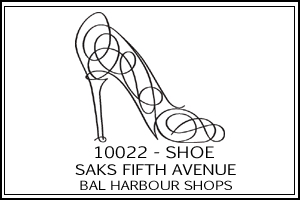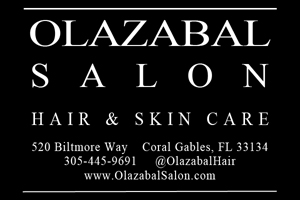
The Baroness Philippine de Rothschild, owner of Chateau Mouton Rothschild talks exclusively to TDC about running the family business, her traveling art exhibit, “Mouton Rothschild: Paintings for the Labels” and her foray into the theater.
The only daughter of Baron Philippe de Rothschild, of the 300-year-old European dynasty, has been at the helm of the legendary family winery, Chateau Mouton Rothschild since 1988.
She was in Miami Beach at the Wolfsonian Museum with her exhibit, Mouton Rothschild: Paintings for the Labels – a collection of the original artworks created by over 60 of the world’s best contemporary artists including Picasso, Chagall, Miro, Dali, Kandinsky, Cocteau and Haring created specifically to adorn the labels on the wine bottles.
The baroness’ entrée into the family business had a circuitous route. She first studied dramatic arts and forged an illustrious acting career. This included starring in one of the lead roles in a French adaptation of Hal Ashby’s film, “Harold and Maude” in 1973 and touring with the production for several years.
Baroness Philippine is an accomplished artist and her father was a keen collector of works of art related to wine, so the exhibit was a logical denouement. Museums around the world have hosted the exhibit of original drawings, oils, gouaches and watercolors. I met the Baroness de Rothschild when she appeared at the Wolfsonian Museum on South Beach for the exhibit. She is charming and energetic and her eyes sparkle as she talks passionately about wine and the stories behind the art.
DAISY: I found it fascinating that you boldly decided not to go into the family wine business. How did your father react to this?
PDR: Quite well. He said to me: “all right, act, but you have to excel!”
DAISY: What did acting fulfill in you at the time that the wine business did not?
PDR: It was the job I liked – it was my career. The wine business was my father’s business.
DAISY: Your favorite acting role?
PDR: The role of Harold’s mother in Harold and Maude.
DAISY: Did you know deep down that you would definitely be going into the family wine business at some point or did it happen unexpectedly?
PDR: I knew that some day I would have to get involved one way or the other. And I did it because I felt I was responsible for passing the business to the next generation.
DAISY: How was your transition into the wine business and how did you prepare?
PDR: I traveled the world meeting importers, distributors, retailers, customers. I learnt the good old-fashioned way!
DAISY: What did you learn as an actor that helped you in the wine business?
PDR: How to behave in public, and how to deal with the media!
DAISY: What types of obstacles did you encounter when you took over Mouton Rothschild?
PDR: Not being taken seriously by the industry because I was a woman.
DAISY: How did you come up with the idea for the wine label art exhibit?
PDR: We had many of the original paintings just lying in a drawer and I thought we should do something with them. In the mid ‘80s, I proposed to my father that we do an exhibition, which he thought was absurd and no one would come to see them. (laughs). Of course, he was wrong, because the exhibition has been displayed around the world!
DAISY: What inspired your father to ask artists to create labels for the wine bottles?
PDR: It started in 1924 when that vintage was put into bottles on the estate, a first in the wine industry, so my father wanted to do something to salute the achievement. But that was not repeated until 1945, when he wanted to celebrate the end of the war and return to peace. He commissioned Philippe Jullian to create a “V” for victory, and that is how it started. Since then, an artist has been commissioned to paint a label for Mouton every year.
DAISY: Why the Wolfsonian Museum for the exhibition?
PDR: The Wolfsonian chose the exhibition at the suggestion of Lee Schrager from Southern Wine & Spirits, founder of the South Beach Wine & Food Festival as a perfect addition to it. We were delighted by being part of the festival, and to be exhibited at The Wolfsonian to show the power of art and design. The paintings on Mouton’s labels illustrate that concept perfectly. My father was the very first in the wine world to do that with the Jean Carlu label in 1924. Interestingly, The Wolfsonian has other works of Carlu in its collection.
DAISY: Which is your favorite label and why?
PDR: That’s like asking if I have a favorite child! I know each of the artists personally, and admire their body of work enough to ask them to paint one of our labels. I love all of the labels for different reasons, and each has a story.
DAISY: Which is the funniest or strangest story about the artists and the labels?
PDR: For the 1993, we asked Balthus for a painting and he submitted a wonderful little nude, which we put on the label. When it came to the United States, a child abuse lobby accused me of kiddie porn. Can you imagine? (laughs) So, we had to sell the 1993 bottle with a blank label in the U.S. which, interestingly enough, has become a collectors’ item!
DAISY: Incredible! How were the artists paid?
PDR: Always, is wine, some cases of the vintage that the artist created, and some older vintages to enjoy sooner.
DAISY: Why was Miami an important stop for the exhibit?
PDR: It is an important city – for art, for culture, and for trends. Within the industry, it has also become an important wine market.
DAISY: What is your most expensive wine?
PDR: 1945 Mouton.
DAISY: What restaurant has the best wine list in Miami?
PDR: The Forge.
DAISY: Favorite thing to do that does not involve wine?
PDR: Acting of course!













Speak Your Mind